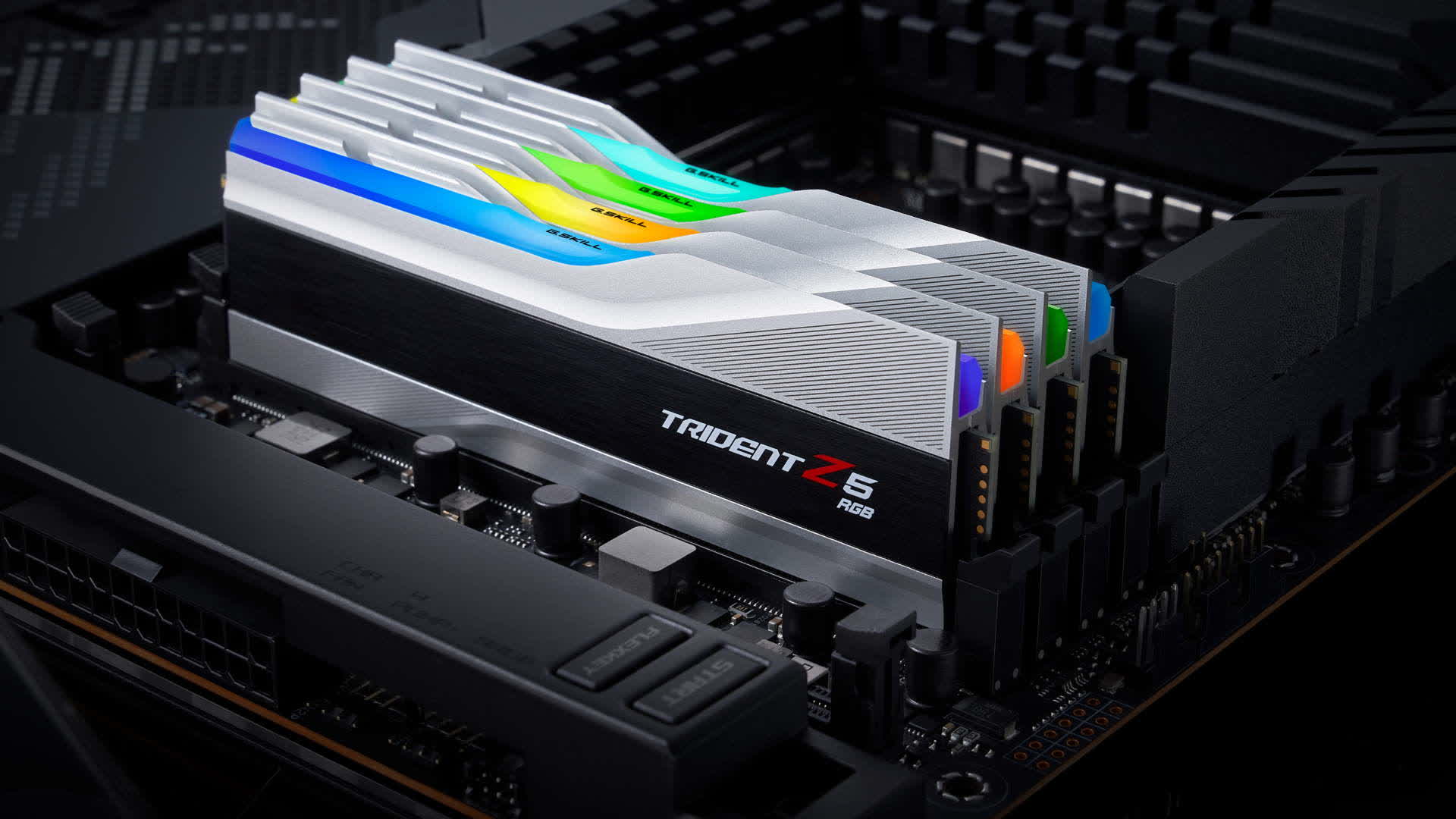headtr1p
Posts: 15 +1
Something to look forward to: DDR5 prices are expected to plummet in the second half of 2022, and industry insiders believe this trend will continue in 2023, according to a report from Digitimes Asia. Memory vendors have started offloading entry-level DDR5 kits and consumer DDR5 prices have fallen below that of memory module manufacturers.

DDR5 is expected to hit its "sweet spot" in 2023, and AMD has predicted that DDR5 could hit DDR4 pricing levels by mid-2023. This isn't exactly surprising news, as we have seen a steady decline in prices over the past few months, falling as much as 20% just in July.
DDR5's initial pricing was somewhat outrageous, driven by limited availability and a heavy early adopter's tax, not to mention scalper pricing. Back in 2021, you were looking at close to $1,000 for a 16GB DDR5 kit. But with increased availability and lower pricing, we could see widespread adoption in the first half of 2023 -- by then the technology should have matured even further, offering lower latency.
Also read: We Bought the Cheapest DDR5 RAM Modules We Could Find, Are They Any Good?
You can now grab a 32GB DDR5 kit for under $200. We've seen a similar scenario with previous memory standards: high initial pricing with low demand, followed by a steady decline in prices and increased availability.
With Ryzen 7000 only weeks away, this is timely news. Early adopters of the AM5 platform won't have to pay an arm and a leg for DDR5 memory. Ryzen 7000 will only support DDR5, which could serve as a catalyst for DDR5 adoption. Even though Intel's Alder Lake CPUs already support DDR5, most users stuck with DDR4 due to steep pricing. But with DDR5 now being a better value proposition, Alder Lake users will be tempted to move on.
Intel's upcoming 13th-gen Raptor Lake chips will retain DDR4 support, but by the time these CPUs land on store shelves, DDR5 should be even more affordable, and we can expect Raptor Lake users to embrace the new technology, too.
While the low latency kits are still fairly expensive, some DDR5 kits are already offering compelling value, and it won't be long before DDR5 becomes the de facto standard. If you can hold off a little longer, you should be able to find a sweet deal on Black Friday.
https://www.techspot.com/news/95958-ddr5-prices-expected-plunge-reach-ddr4-pricing-levels.html